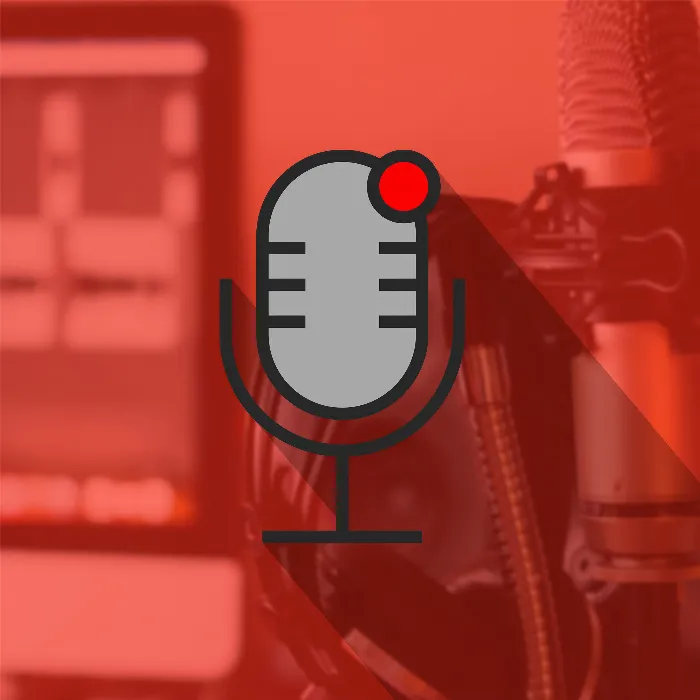Podcasting can be an enriching way to share your voice and ideas with the world. With the right software, like Audacity, creating your own podcast episode becomes child's play. This guide will take you step by step through the process of recording in this powerful, free audio editor.
Key Insights
- Audio input and microphone selection are crucial.
- The microphone volume should be carefully adjusted.
- A short recording pause for noise reduction is recommended.
- Mistakes and pauses can be easily edited afterwards.
Choosing Microphone and Audio Settings
Before you start recording your podcast episode, it is important to make the right audio settings. Open Audacity and go to the microphone settings. Here you will find the options for selecting your microphone. Choose the microphone you want to use – for example, a USB microphone or the built-in microphone of your webcam. You can test each input to see which one works best for your recording.
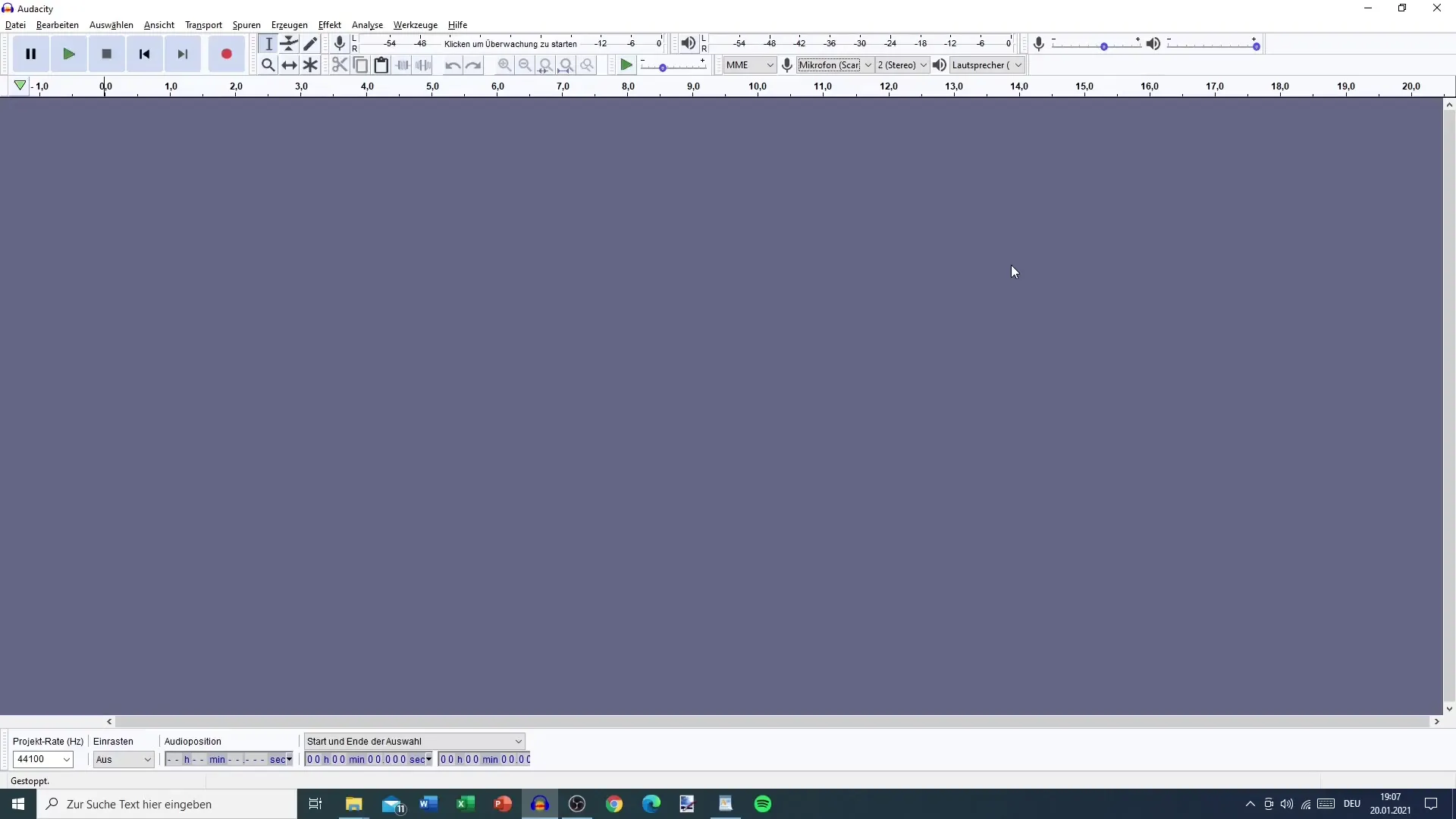
To adjust the sound output, you should also check the audio output. Usually, this is the default speaker from your operating system. Make sure the correct settings are made here.
The microphone volume is equally important. You should adjust these levels so that your sound is not distorted. A volume of around 60–80% is often a good starting point. A level that is too low can make editing more difficult later on.
Starting the Recording
Once all settings are in place, you can start your first recording. Click on the "Record" button in the user interface. It may be helpful to remain silent for a short moment and start the recording with four seconds of silence. This silence will aid in noise reduction later on and provide a clear starting point in the waveform.
Pay attention to the waveform during the recording. It will show you if your audio sounds good and if there are any distortions. If you feel something is off, take a short break and adjust the settings accordingly.
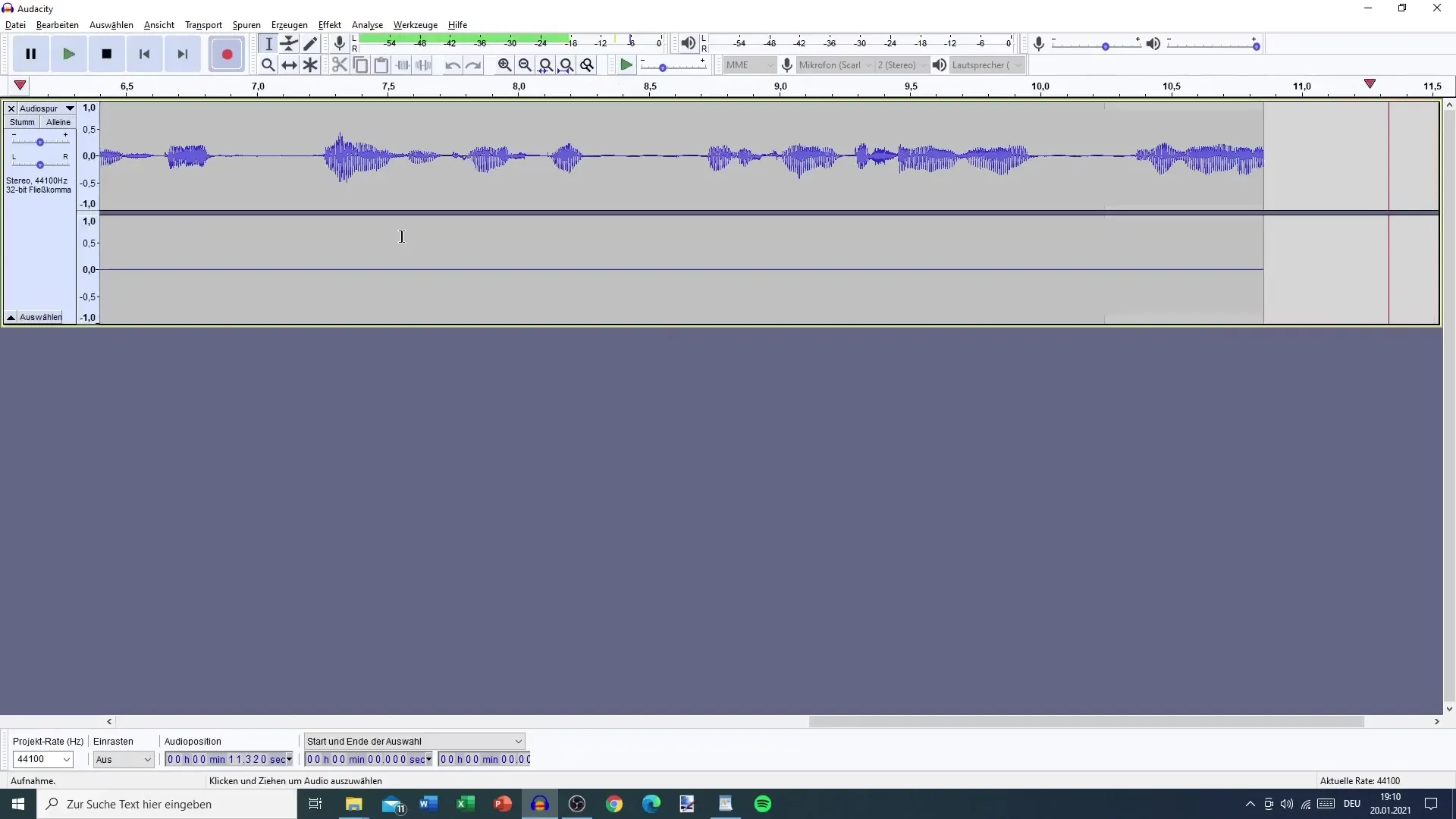
Do not fear mistakes during the recording. It is completely normal not to be perfect at the beginning. If you notice an error, make a note of where it occurred so you can easily find and edit it later on.
Editing Pauses and Errors
A recording is often not perfect, and pauses or mistakes can be easily removed. If you have had a pause or made a small mistake, you can simply mark these points and edit them later. Marking these points in Audacity is easy: Click at the beginning and end of the section you want to remove.
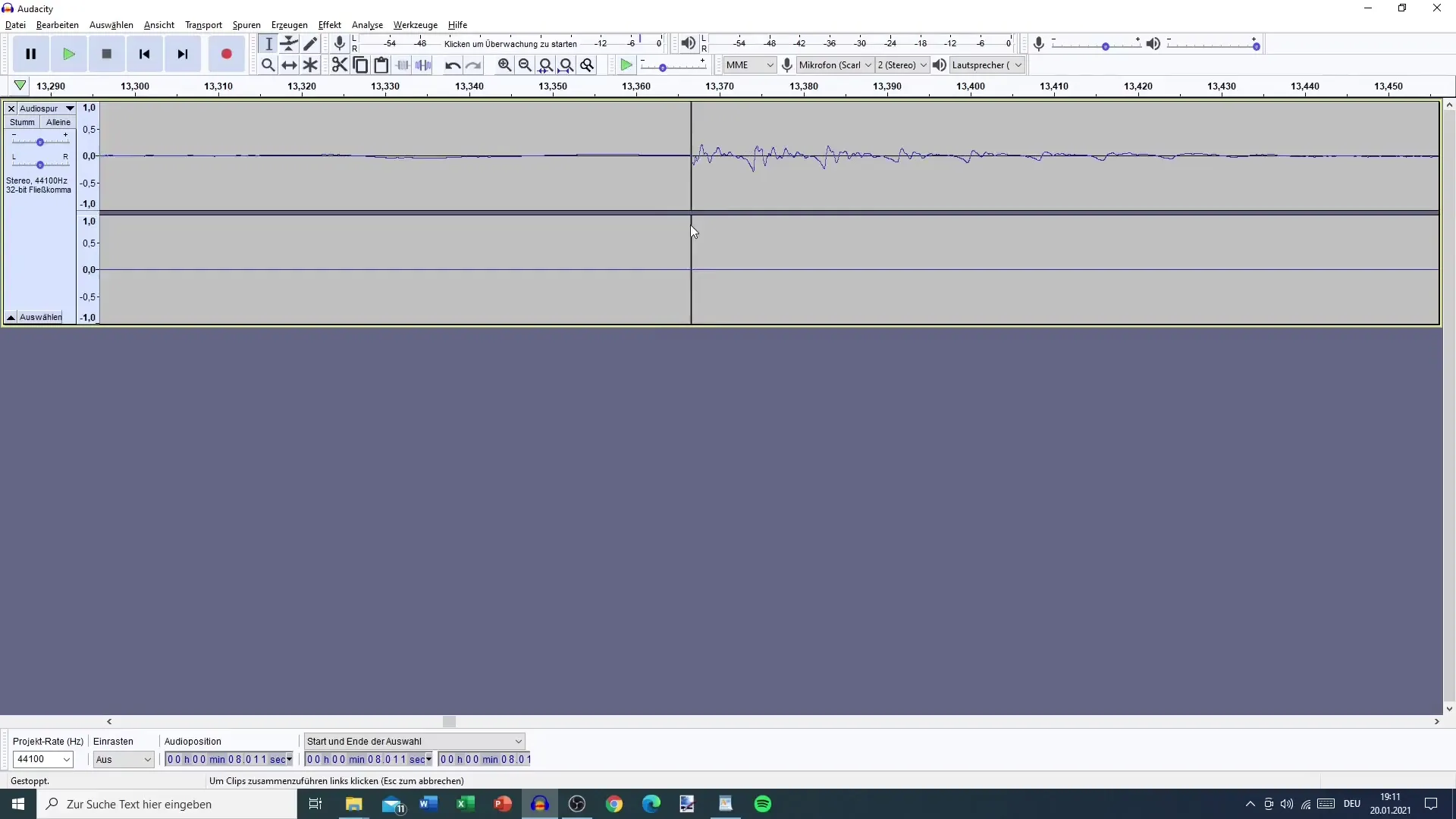
You can also edit the gaps that arise after removing these sections. Audacity allows you to quickly close these gaps in the recording by simply clicking on the corresponding points and snapping them together, so the audio track is closed again.
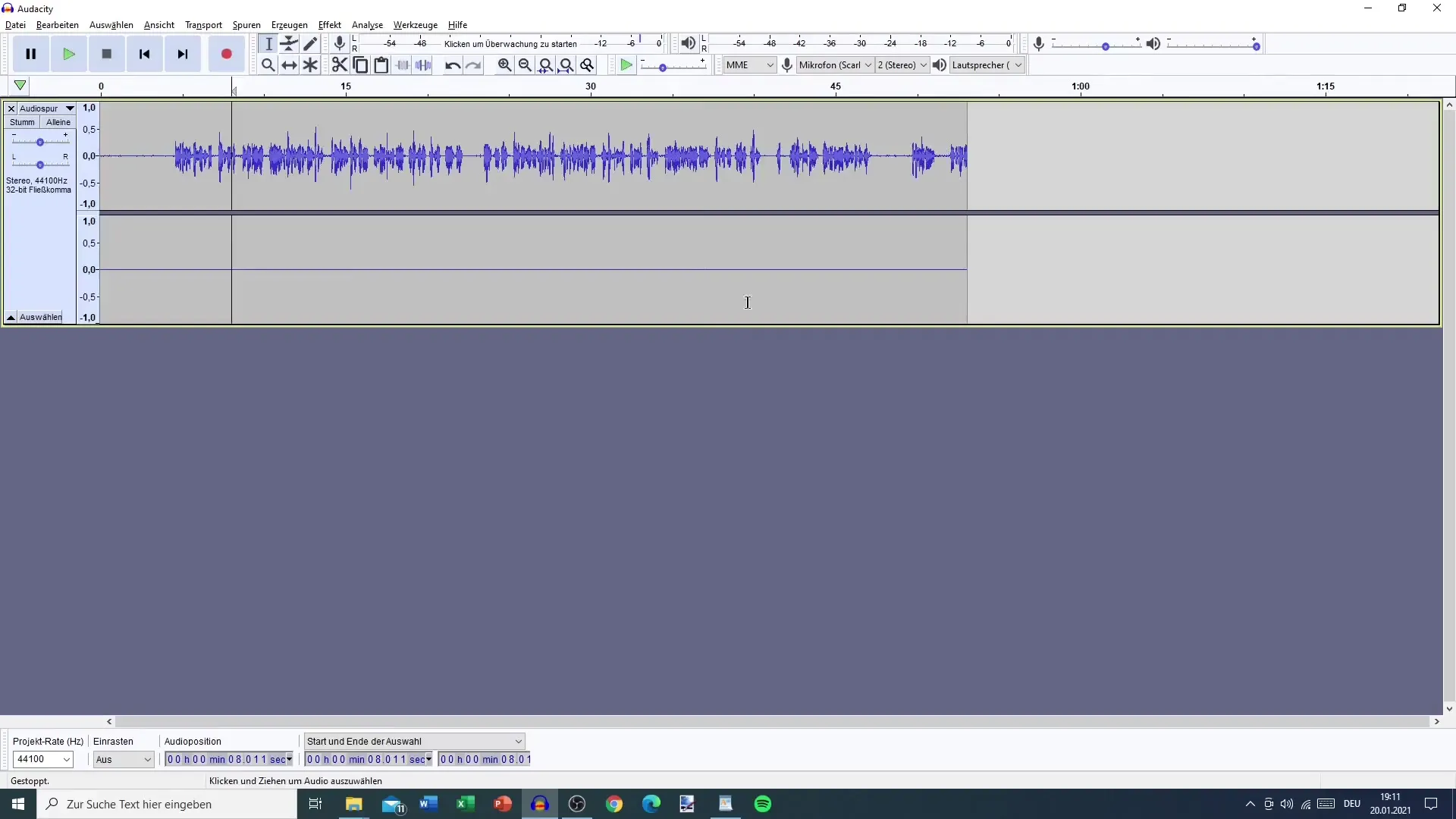
Post-Recording Editing
After the recording, the next step is post-editing. This includes adding effects, removing unnecessary elements, and optimizing the overall sound. In the following video tutorial, we will discuss the various techniques for post-editing in more detail. Remember to always keep a backup of your original recording before you start editing.
Summary
In this guide, you have learned the basic steps for recording your first podcast episode with Audacity. You have learned how to adjust the right microphone and audio settings, how to handle mistakes, and how to edit pauses. With these fundamentals, you can now effortlessly record your own podcast episode.
Frequently Asked Questions
How do I choose the right microphone?Choose the microphone that best suits your recording style. USB microphones are often a good choice.
How do I set the volume correctly in Audacity?Adjust the microphone volume to 60-80% to avoid distortion.
What do I do with errors during recording?Note the time of the error so you can easily find it later during post-editing.
How can I edit pauses in the recording?Mark the pause in Audacity and remove the section to make the recording smoother.
How do I perform noise reduction?Start your recording with a brief silence to make it easier to remove noise later on.
